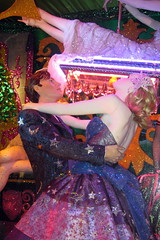An Apprentice’S Guiding Light To The Account Of Tarot Cards
The past of the Tarot is something that is concealed by time. There are some hints and analyzers that equate the creation of the Tarot with that of ancient Egypt, while other analyzers and analyzers indicate that the Tarot shares origin with ancient gypsy cultures. Still, there are more scholars that attribute an Italian introduction to the Tarot cards, and it is accepted that the Tarot Cards transformed into an instrument of divination right around the 1400s. Since that time, 100s of divergent decks show grown and are today in use. One of the largest favored decks being the Rider-Waite deck. A deck of tarot cards, as they are used today, contains 78 cards, all of which contain variant, meaningful symbols which can be interpreted in a number of ways. The deck contains a total of four suits, and the names of the suits may fluctuate depending upon the tarot deck one is using. Time after time times, the suits are referred to as wands, cups, swords, and coins, which make up what is known as the Minor Arcana. Meanwhile, the Major Arcana is made up of of twenty two cards, all of which are used to signify major events or folk in a translating. Understanding a tarot card is easy, as each trump card has a distinct meaning. But, careful interpretation is needed if one wants to read the meaning from the amassing of cards. These cards have astrological connections with readings placed under the context of the Octavian Calendar. Tarot cards are accredited to readily describe the fleshly and emotional characters of the subject. The rich and age-old tradition of tarot reading is constantly enlarge through time. The methods of interpreting tarot cards continue to change to catch up with the lifestyle it is living in. The change in meaning could
